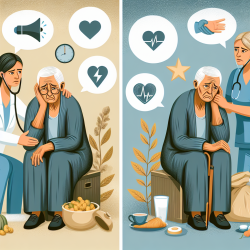As practitioners in the field of speech therapy, understanding the nuances of child speech development is crucial. The research article "Disfluencies of Young Children in Private Speech and in Conversation" by Richard R. Martin and Samuel K. Haroldson offers valuable insights into how environmental contexts impact children's speech fluency. By delving into the findings of this study, we can refine our therapeutic approaches and encourage further research in this area.
The study involved ten children aged 3.5 to 5.0 years and examined their speech in two distinct scenarios: interacting with an adult and playing alone. Each session lasted 20 minutes, with 10 minutes dedicated to each condition. The results indicated that while the number of words spoken remained stable across sessions, the children produced fewer words but exhibited a higher percentage of disfluencies in the private speech condition compared to the adult interaction scenario.
These findings highlight the importance of the speaking environment in influencing speech fluency. As practitioners, we can implement several strategies based on these outcomes to enhance our therapy sessions:
- Encourage Varied Interaction: Introduce diverse speaking scenarios in therapy sessions, including both one-on-one interactions and opportunities for the child to engage in private speech. This approach can help identify specific contexts where the child may experience more disfluencies and tailor interventions accordingly.
- Monitor Environmental Factors: Pay close attention to the child's environment during therapy. Factors such as the presence of an adult, peer interactions, and even the physical setting can impact speech fluency. Adjusting these variables can create a more conducive environment for fluent speech.
- Focus on Comfort and Familiarity: Build a rapport with the child to create a comfortable and familiar environment. This can reduce anxiety and encourage more fluent speech during interactions.
- Implement Structured Play: Incorporate structured play activities that mimic the study's conditions. Observing the child's speech in both guided and independent play can provide insights into their speech patterns and areas needing improvement.
Additionally, this study opens avenues for further research. Future studies could explore the impact of different types of interactions (e.g., with peers, parents, or therapists) on speech fluency. Understanding the role of egocentric versus socialized speech in disfluency can also provide deeper insights into speech development.
To read the original research paper, please follow this link: Disfluencies of Young Children in Private Speech and in Conversation.










